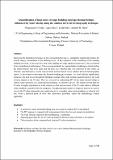| dc.contributor.author | O'Grady, Małgorzata | |
| dc.contributor.author | Lechowska, Agnieszka A. | |
| dc.contributor.author | Harte, Annette M. | |
| dc.date.accessioned | 2019-01-11T14:36:00Z | |
| dc.date.issued | 2017-09-18 | |
| dc.identifier.citation | O'Grady, Małgorzata, Lechowska, Agnieszka A., & Harte, Annette M. (2017). Quantification of heat losses through building envelope thermal bridges influenced by wind velocity using the outdoor infrared thermography technique. Applied Energy, 208, 1038-1052. doi: https://doi.org/10.1016/j.apenergy.2017.09.047 | en_IE |
| dc.identifier.issn | 0306-2619 | |
| dc.identifier.uri | http://hdl.handle.net/10379/14797 | |
| dc.description.abstract | Improving the thermal performance of the existing building stock is essential to significantly reduce the overall energy consumption in the building sector. A key objective is the retrofitting of the existing building envelope. A necessary first step in the building envelope optimization process is the assessment of its actual thermal performance. This assessment should be repeated after retrofitting to clearly define the improvements that were made and the heat loss reduction that was achieved. In this study, an efficient, non-destructive, in-situ measurement method, based on an outdoor infrared thermographic survey, is developed to determine the thermal bridging performance. As wind velocity significantly influences the heat losses through the building envelope, this study includes quantification of the wind velocity impact on the Psi-value. This was assessed by undertaking ITT of the same thermal bridge at various wind velocities, in a controlled environment, in a hot box device. The results showed that the Psi-value is highly dependent on wind velocity so that measurement of the Psi-value taken at different wind conditions cannot be directly compared. An adjustment procedure is proposed that can be used to convert the Psi-value measured at any wind velocity to a standard value corresponding to a velocity of 4 m/s. From a practical point of view, this adjustment procedure makes the methodology widely applicable. | en_IE |
| dc.description.sponsorship | Enterprise Ireland for the provision of financial support for this study through Innovation VoucherIV-2014-4203. | en_IE |
| dc.format | application/pdf | en_IE |
| dc.language.iso | en | en_IE |
| dc.publisher | Elsevier | en_IE |
| dc.relation.ispartof | Applied Energy | en |
| dc.rights | Attribution-NonCommercial-NoDerivs 3.0 Ireland | |
| dc.rights.uri | https://creativecommons.org/licenses/by-nc-nd/3.0/ie/ | |
| dc.subject | Building envelope | en_IE |
| dc.subject | Hot box | en_IE |
| dc.subject | Forced convection | en_IE |
| dc.subject | Infrared thermography technique | en_IE |
| dc.subject | Quantitative thermography | en_IE |
| dc.subject | Thermal bridging | en_IE |
| dc.subject | ENERGY-EFFICIENCY | en_IE |
| dc.subject | COEFFICIENT CORRELATIONS | en_IE |
| dc.subject | OPTIMIZATION | en_IE |
| dc.subject | DESIGN | en_IE |
| dc.subject | PERFORMANCE | en_IE |
| dc.subject | DIAGNOSTICS | en_IE |
| dc.subject | VALIDATION | en_IE |
| dc.subject | MODEL | en_IE |
| dc.title | Quantification of heat losses through building envelope thermal bridges influenced by wind velocity using the outdoor infrared thermography technique | en_IE |
| dc.type | Article | en_IE |
| dc.date.updated | 2019-01-08T16:30:38Z | |
| dc.identifier.doi | 10.1016/j.apenergy.2017.09.047 | |
| dc.local.publishedsource | https://doi.org/10.1016/j.apenergy.2017.09.047 | en_IE |
| dc.description.peer-reviewed | peer-reviewed | |
| dc.contributor.funder | Enterprise Ireland | en_IE |
| dc.description.embargo | 2019-09-18 | |
| dc.internal.rssid | 13562030 | |
| dc.local.contact | Annette M. Harte, Dept. Of Civil Engineering, Civil Engineering Building, Nui Galway. 2732 Email: annette.harte@nuigalway.ie | |
| dc.local.copyrightchecked | Yes | |
| dc.local.version | ACCEPTED | |
| nui.item.downloads | 560 | |


